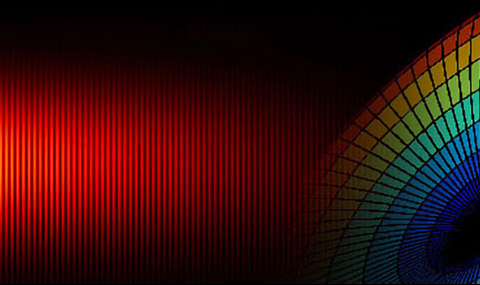This is the question: Is there a way to make a molecule spin like a propeller by using lasers? Can one create a gas sample in which the molecules rotate preferentially clock- or counterclockwise? And can one also maintain this directed rotation after the laser's turn-off? The answer is yes, and there are several ways to achieve these goals.
The most straightforward approach uses two ultrashort linearly polarized laser pulses. The first pulse kicks the molecules towards its polarization axis, aligning them to this axis. However, this kick is axially symmetric, so the molecules rotate in all directions with no preferential sense (depending on each molecule’s initial orientation). This symmetry is broken by the second pulse, which is polarized at an angle of 45 degrees to the first pulse. Applied at the moment of maximal alignment, the second pulse breaks the symmetry. It forces the molecules to rotate in the direction from the first to the second pulse's polarization axis.

A molecular rotational wave packet is excited by two delayed cross-polarized laser pulses resulting in unidirectional rotation in a plane.
This manipulation of molecules was first suggested by us in [1], and then observed experimentally in a molecular beam of benzene molecules, with a nice agreement between the experiment and theory [2]. Moreover, we analyzed the optical properties of a gas of molecules rotating in unison and concluded that the rotation of the birefringence axis causes a substantial frequency shift to an incoming pulse. This insight was experimentally observed [3] in collaboration with the Prior group. The observation of THz frequency shift helped to prove the realization of unidirectional rotation in a gas of smaller molecules, such as deuterium and nitrogen.
A related scheme, which we developed together with the group of Valery Milner from UBC, Vancouver, uses a chiral train of linearly polarized pulses [4, 5] with a constant time delay between them, and a constant pulse-to-pulse turn of the polarization axis. The pulse train can be adjusted to excite a narrow group of rotational levels with a preferred sense of rotation by controlling the time delay and polarization angle shift.

A chiral train of laser pulses induces molecular unidirectional rotation.
A third scheme is the so-called "optical centrifuge". Here, a linearly polarized laser with a rotating and accelerated polarization axis first traps the molecules and then accelerates them to very high rotational states. This scheme was first suggested and demonstrated in 1999, and recently gained new interest due to novel experimental and theoretical developments [6]. The picture shows the simulated single-sided Raman signal for oxygen molecules accelerated in the optical centrifuge, demonstrating an extremely high level of rotational excitation.

Experimentally measured Raman shift as a function of time reflects the unidirectional molecular rotation induced by the optical centrifuge for molecules.
Such fast-spinning molecules are called super-rotors. Little is known yet about molecular super rotors: What are their optical properties, and how do they collide, minding that the rotation is much faster than the duration of any collision event? Are there new kinetic effects in a gas of super-rotors? And what happens if we add some external fields, like that of a strong magnet? These and other questions are currently under investigation in our group...
- S. Fleischer, Y. Khodorkovsky, Y. Prior, and I. Sh. Averbukh, “Controlling the sense of molecular rotation”, New J. Phys. 11, 105039 (2009)
- Y. Khodorkovsky, K. Kitano, H. Hasegawa, Y. Ohshima, and I. Sh. Averbukh, “Controlling the sense of molecular rotation: Classical versus quantum analysis”, Phys. Rev. A 83, 023423 (2011)
- O. Korech, U. Steinitz, R. J. Gordon, I. Sh. Averbukh, and Y. Prior, “Observing molecular spinning via the rotational Doppler effect”, Nat. Photonics 7, 711–714 (2013)
- S. Zhdanovich, A. A. Milner, C. Bloomquist, J. Floß, I. Sh. Averbukh, J. W. Hepburn, and V. Milner, “Control of Molecular Rotation with a Chiral Train of Ultrashort Pulses”,
Phys. Rev. Lett. 107, 243004 (2011) - J. Floß and I. Sh. Averbukh, “Molecular spinning by a chiral train of short laser pulses”,
Phys. Rev. A 86, 063414 (2012) - U. Steinitz, Y. Prior, and I. Sh. Averbukh, “Optics of a Gas of Coherently Spinning Molecules”,
Phys. Rev. Lett. 112, 013004 (2014)


